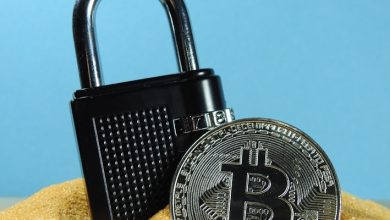Smart Contract Vulnerabilities: Identification and Prevention

- Understanding Smart Contracts and Their Vulnerabilities
- Common Vulnerabilities Found in Smart Contracts
- Methods for Identifying Vulnerabilities in Smart Contracts
- Best Practices for Preventing Smart Contract Vulnerabilities
- Auditing Smart Contracts: A Crucial Step in Prevention
- The Future of Smart Contract Security
Understanding Smart Contracts and Their Vulnerabilities
Smart contracts are self-executing contracts with the terms of the agreement between buyer and seller directly written into lines of code. While smart contracts offer numerous advantages, they are not immune to vulnerabilities. Understanding the vulnerabilities associated with smart contracts is crucial for ensuring the security and integrity of transactions conducted using this technology.
One common vulnerability of smart contracts is coding errors. These errors can lead to unexpected behavior or exploitation by malicious actors. It is essential for developers to conduct thorough testing and auditing of smart contract code to identify and address any potential vulnerabilities before deployment.
Another vulnerability is the lack of proper authorization mechanisms. If a smart contract does not adequately control who can access and modify the contract, it can be susceptible to unauthorized actions that compromise its integrity. Implementing robust access control mechanisms is essential for preventing unauthorized access and manipulation of smart contracts.
Furthermore, smart contracts can be vulnerable to external data manipulation. If a smart contract relies on external data sources that are not secure or tamper-proof, it can be manipulated to produce undesirable outcomes. Utilizing secure and reliable data sources, as well as implementing data validation mechanisms, can help mitigate this vulnerability.
In conclusion, understanding the vulnerabilities associated with smart contracts is essential for ensuring the security and reliability of transactions conducted using this technology. By addressing coding errors, implementing proper authorization mechanisms, and mitigating external data manipulation risks, developers can enhance the security of smart contracts and protect the integrity of blockchain transactions.
Common Vulnerabilities Found in Smart Contracts
Smart contracts are prone to various vulnerabilities that can be exploited by malicious actors. Some common vulnerabilities found in smart contracts include reentrancy, integer overflow/underflow, timestamp dependence, and unauthorized access.
Reentrancy occurs when a contract calls another contract before finishing its execution, allowing the second contract to re-enter the first contract and potentially manipulate the state of the contract. Integer overflow/underflow happens when a variable exceeds its maximum/minimum value, leading to unexpected behavior. Timestamp dependence vulnerabilities arise when a contract relies on timestamps to make decisions, making it susceptible to manipulation. Unauthorized access vulnerabilities occur when a contract does not properly restrict access to sensitive functions or data, allowing unauthorized users to exploit the contract.
To prevent these vulnerabilities, developers should follow best practices such as using secure coding techniques, conducting thorough testing, and implementing access control mechanisms. By addressing these common vulnerabilities, developers can enhance the security of smart contracts and protect them from potential exploits.
Methods for Identifying Vulnerabilities in Smart Contracts
One effective method for identifying vulnerabilities in smart contracts is through code review. This involves carefully analyzing the code line by line to spot any potential weaknesses or flaws that could be exploited by malicious actors. It is essential to have a thorough understanding of the programming language used to create the smart contract to effectively identify vulnerabilities during the review process.
Another method for identifying vulnerabilities in smart contracts is through automated tools. These tools can help scan the code for common security issues and provide developers with a report detailing any potential vulnerabilities that need to be addressed. While automated tools can be a useful supplement to manual code review, they should not be relied upon as the sole method for identifying vulnerabilities.
Penetration testing is another valuable method for identifying vulnerabilities in smart contracts. This involves simulating real-world attacks on the smart contract to identify any weaknesses that could be exploited by hackers. By testing the smart contract in a controlled environment, developers can better understand its security posture and make any necessary improvements to mitigate potential risks.
Additionally, engaging with the security community can be a proactive way to identify vulnerabilities in smart contracts. By sharing the code with security researchers and experts, developers can leverage their expertise to uncover any potential vulnerabilities that may have been overlooked during the development process. This collaborative approach can help strengthen the security of smart contracts and reduce the risk of exploitation by malicious actors.
Best Practices for Preventing Smart Contract Vulnerabilities
When it comes to preventing smart contract vulnerabilities, there are several best practices that developers can follow to ensure their code is secure. By implementing these practices, developers can significantly reduce the risk of potential exploits and attacks on their smart contracts.
- Thorough Code Review: Conducting a comprehensive review of the smart contract code by multiple developers can help identify any potential vulnerabilities or weaknesses.
- Use Standard Libraries: Utilizing well-established and audited libraries for common functions can help reduce the risk of introducing vulnerabilities into the code.
- Implement Access Control: Enforcing strict access control mechanisms can prevent unauthorized parties from interacting with the smart contract and making unauthorized changes.
- Avoid External Calls: Limiting the use of external calls to trusted contracts can help prevent attacks such as reentrancy and denial of service.
- Testing and Auditing: Conducting thorough testing and security audits by third-party experts can help identify and address any vulnerabilities before deployment.
By following these best practices, developers can enhance the security of their smart contracts and minimize the risk of potential exploits. It is essential to prioritize security throughout the development process to ensure the integrity and reliability of smart contracts in blockchain applications.
Auditing Smart Contracts: A Crucial Step in Prevention
Auditing smart contracts is a crucial step in preventing vulnerabilities that could lead to security breaches and financial losses. By thoroughly examining the code and logic of smart contracts, auditors can identify potential weaknesses and ensure that the contract operates as intended. This process involves analyzing the contract’s architecture, functionality, and dependencies to uncover any flaws or errors that could be exploited by malicious actors.
Conducting a comprehensive audit of smart contracts is essential for mitigating risks and safeguarding the integrity of blockchain transactions. Auditors must have a deep understanding of programming languages, cryptography, and blockchain technology to effectively assess the security of smart contracts. They use a combination of manual review and automated tools to identify vulnerabilities and recommend solutions to strengthen the contract’s defenses against potential attacks.
Furthermore, auditing smart contracts helps to enhance transparency and trust in decentralized applications. By verifying the accuracy and reliability of the contract’s code, auditors can provide assurance to users and stakeholders that the smart contract is secure and free from exploitable vulnerabilities. This not only protects the interests of all parties involved but also promotes the adoption of blockchain technology by ensuring the integrity of smart contract transactions.
The Future of Smart Contract Security
In order to ensure the security of smart contracts in the future, it is crucial to stay vigilant and proactive in identifying and addressing vulnerabilities. Developers should prioritize security measures from the initial stages of smart contract development to prevent potential exploits. Regular code audits and security assessments should be conducted to detect any weaknesses or loopholes that could be exploited by malicious actors.
Implementing best practices such as following secure coding standards, conducting thorough testing, and utilizing secure development tools can significantly reduce the risk of vulnerabilities in smart contracts. Additionally, staying informed about the latest security threats and trends in the blockchain industry is essential for adapting security measures accordingly.
Collaboration and knowledge-sharing within the blockchain community can also help in improving smart contract security. By exchanging insights and experiences, developers can learn from each other’s mistakes and successes, ultimately leading to the development of more secure smart contracts. Furthermore, engaging with security experts and researchers can provide valuable insights into emerging threats and vulnerabilities.
As technology evolves, so do the methods used by malicious actors to exploit vulnerabilities in smart contracts. Therefore, it is imperative to continuously update security protocols and practices to stay ahead of potential threats. By remaining proactive and adaptive, developers can enhance the security of smart contracts and safeguard the integrity of blockchain ecosystems for years to come.



